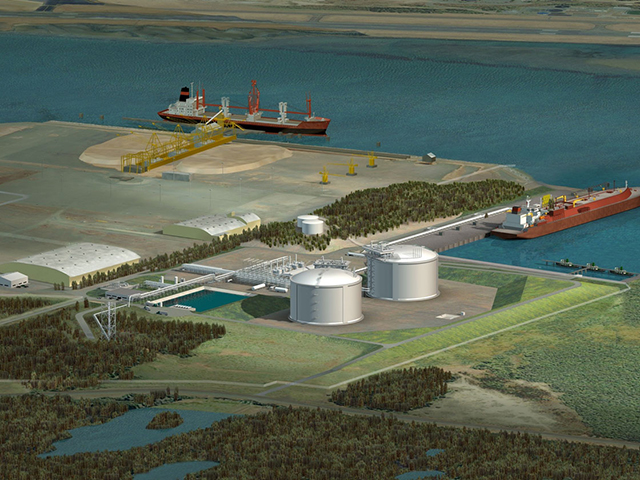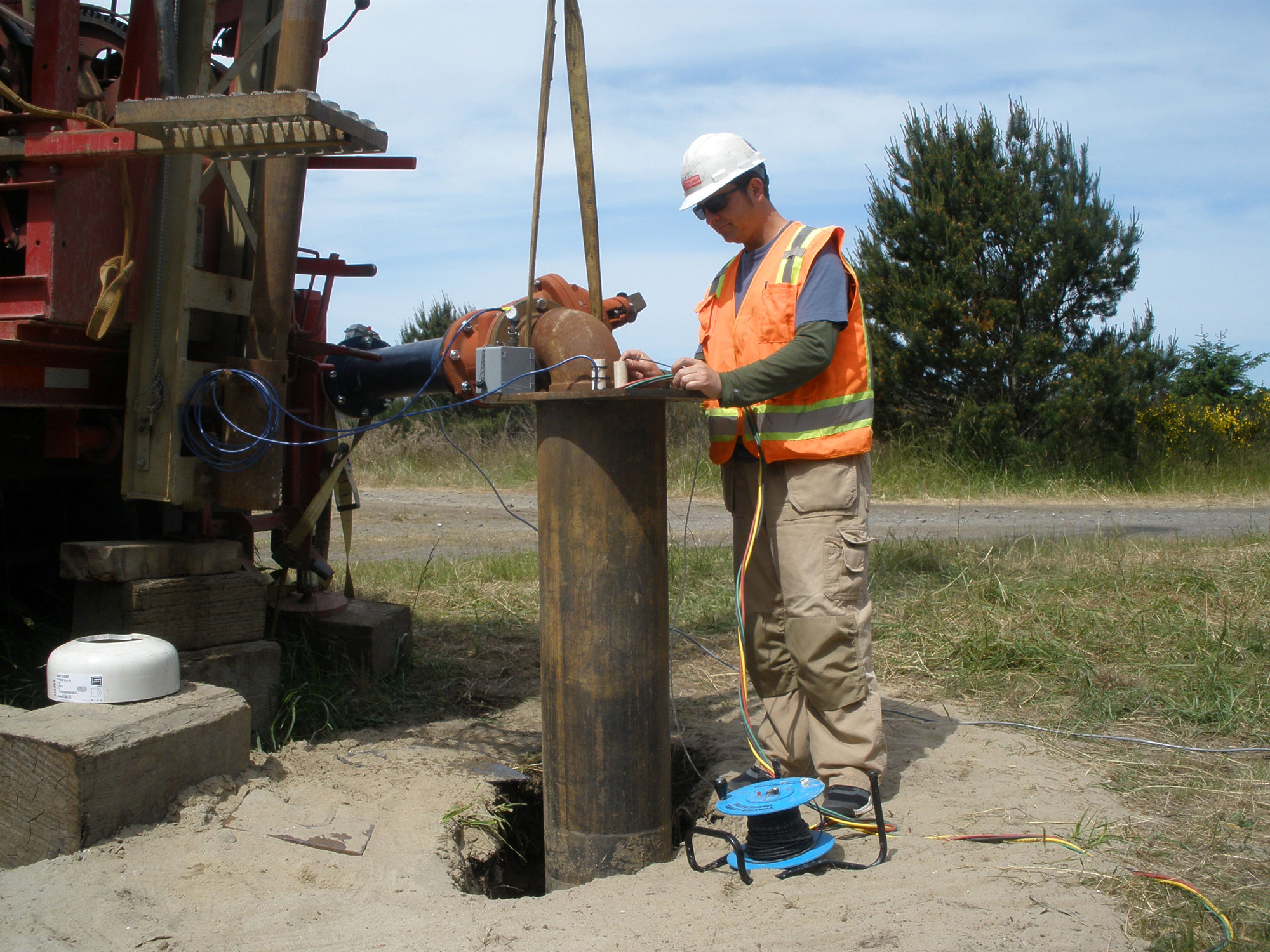


Jordan Cove Liquefied Natural Gas Facility
GRI is conducting multi-phased environmental, geotechnical, geologic, and seismic investigations for the proposed Liquefied Natural Gas (LNG) terminal facility to be located on the North Spit of Coos Bay, Oregon. The tanks will be about 300 feet in diameter and 175 feet high and will be supported on a base isolated mat foundation designed to accommodate the high seismic loading. A new rectangular slip approximately 1,200 feet wide and 1,400 feet long will be dredged to about elevation -50 feet, with barge and ship receiving docks constructed on two sides. The subsurface exploration program has included over 35 borings and 45 cone penetrations tests up to 200 feet deep. Geophysical exploration included a seismic downhole shear wave velocity survey in a 200-foot-deep boring, a spectral analysis of surface waves (SASW) survey, a seismic refraction survey, and an overwater marine seismic reflection survey in the Coos River to evaluate the presence of a potential fault immediately south of the site. The overwater geophysical work was also used to evaluate the presence of rock within the proposed turning basin dredging area. To meet the requirements of the Federal Energy Regulatory Commission (FERC), GRI completed a probabilistic seismic hazard analysis (PSHA) to develop seismic design recommendations and identify and evaluate seismic hazards associated with ground acceleration, amplification, liquefaction, ground rupture, and tsunami waves at the site. GRI has completed an extensive performance-based seismic slope deformation analysis to evaluate acceptable deformations and waterfront ground improvement scenarios.
Location: Coos Bay, Oregon
Owner: Jordan Cove Energy Project
Market Sector: Energy

